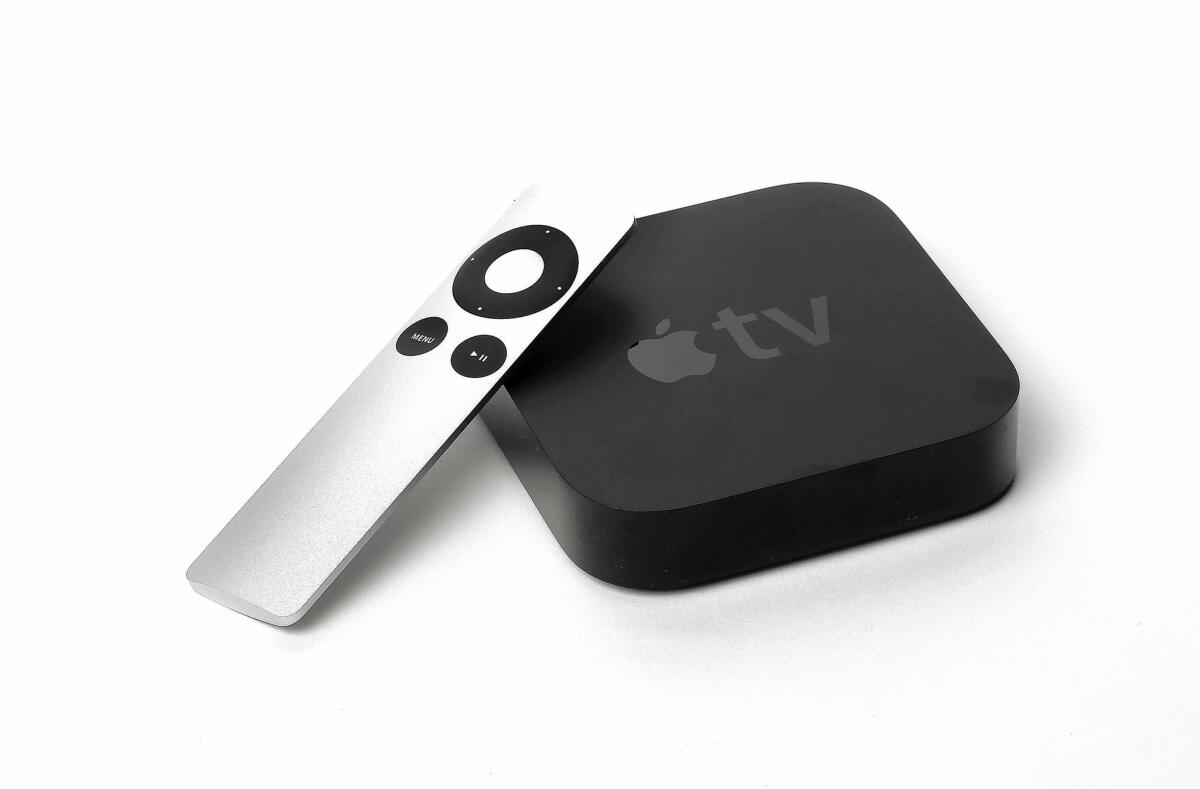Big pay-TV bundles going the way of the dinosaurs

Anyone who’s been thinking about cutting the pay-TV cord now has more food for thought.
Apple made headlines this week with plans for an online TV service featuring 25 channels. Sony took the wraps off its PlayStation Vue video service. And HBO revealed plans to make its new online service, HBO Now, available directly to consumers on various devices.
These are some pretty major developments, showing that consumers no longer have to be held hostage by conventional pay-TV companies and their bloated bundles of hundreds of unwanted channels.
But we still have a ways to go before people can purchase only the channels they watch.
“Programmers see the writing on the wall,” said Jim Nail, principal analyst at Forrester Research. “They know that bundles are going away. But they’re going to hold out for as long as they can.”
Apple pioneered the iTunes model that offered users only the music they desire. The fact that the tech giant can’t do the same with streaming TV shows how tough it will be to achieve a la carte programming.
“There’s momentum toward cord-cutting and a la carte,” said Van Baker, a tech analyst with market researcher Gartner. “It’s what the millennials want. So, to a certain extent, it’s inevitable.”
Even so, the heavyweight programming companies such as Disney, Fox and Viacom want nothing to do with a la carte, he said, not when they’re raking in gobs of money forcing people to pay for channels they didn’t ask for and don’t want.
“Apple understands they’re perpetuating an unpopular business model,” Baker said. “The company understands people’s desire for a la carte. But the reality is that TV content providers will fight this tooth and nail.”
Still, Apple’s stature and credibility among consumers give it the potential to be a pay-TV game changer. The company reportedly will offer a package of about two dozen popular channels beginning this fall.
Apple’s so-called skinny bundle, along with other online services such as Sling TV, Netflix and Hulu, are a response to the growing number of cord-cutters who are sick of high pay-TV bills and limited options.
The average TV viewer watches only 17 channels on a regular basis, according to Nielsen.
I spoke with a number of tech and telecom experts about Apple’s reported streaming service. The consensus was that skinny bundles reflect an awareness among pay-TV companies that consumers’ patience with fat programming packages has worn thin.
But pay-TV companies and programmers aren’t ready to throw in the towel. They’re hoping that a new breed of skinny bundles will quiet a la carte advocates while keeping cord-cutters in the fold.
“Apple has been trying for years to get into this business,” said Deana Myers, principal analyst with the media research firm SNL Kagan. “They’re offering a cheaper option to consumers, but they still won’t allow people to pick and choose.”
By “cheaper,” what she’s saying is that Apple’s streaming service may not cost as much each month as current pay-TV services, but the channels themselves won’t exactly be bargains.
For instance, an Apple skinny bundle of 25 channels that would include ABC, CBS, Fox and certain cable channels such as ESPN and FX could cost around $30 monthly.
Tack on HBO for $15, Netflix for $9, Hulu for $8, and you’re back near the average $64 that the Federal Communications Commissions says most households pay for cable TV each month. And that doesn’t include an additional $50 or so for high-speed Internet access.
“Suddenly, you’re getting fewer channels than you do now for more money,” said Greg Ireland, a telecom analyst with market researcher IDC. “That’s why a lot of people will probably stick with their current bundles.”
The prevailing wisdom in telecom circles is that offering channels a la carte would drive prices higher and provide consumers with fewer choices. It’s the argument that the pay-TV industry routinely makes in defense of its current bundles.
I don’t see why higher prices and fewer choices are a given.
Just because HBO thinks it’s worth $15 a month doesn’t mean every other channel can get away with similar pricing. Moreover, how long could HBO sustain that level if other premium channels, to compete, price themselves at $10 or less?
Maybe the ESPNs and Nickelodeons of the cable world, with their high fixed costs, would find it hard to compete on price. However, this represents a big opportunity for innovative companies that can offer similar programming for less.
A la carte is the future. It’s what consumers want, and it’s the natural outcome of a transition to online distribution.
That’s why Apple’s planned service is more an evolutionary than a revolutionary move.
Forrester’s Nail likened the current state of the pay-TV business to what scientists call the Cambrian explosion, in which lots of new species emerged about 500 million years ago.
“We’ve gone from one species — the cable company — to incredible diversity on the Internet,” he said. “Evolution will now whittle the number of species down. In a few years, we’ll know what consumers really want.”
We already do. But Nail is right: It’ll take a while longer for pay-TV companies to accept that times have changed and that they’ll have to adapt or become extinct.
Apple’s TV service will be a better breed of dinosaur. But it’ll still be a dinosaur.
David Lazarus’ column runs Tuesdays and Fridays. He also can be seen daily on KTLA-TV Channel 5 and followed on Twitter @Davidlaz. Send your tips or feedback to david.lazarus@latimes.com.







